This is my real world comparison between the Fujifilm XF16-55mm zoom with the XF16mm f/1.4, XF23mm f/1.4, XF35mm f/1.4 and the XF56mm f/1.2 prime lenses. I often hear statements like prime lenses are better than zoom lenses. Is that so? Let’s find out…
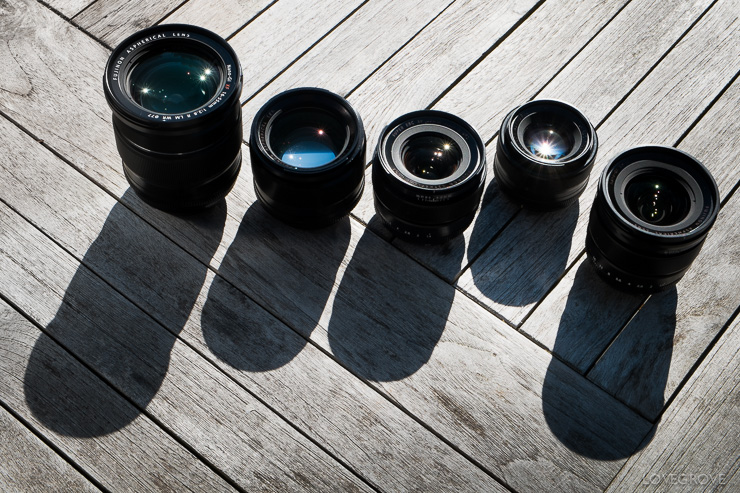
From left to right: The Fuji 16-55mm f/2.8 zoom, 56mm f/1.2, 23mm f/1.4, 35mm f/1.4 and the new 16mm f/1.4 prime lens. The shadows show their relative sizes quite well. Eagle eyed photographers amongst you will notice the lettering on my primes is blacked out. I used a permanent marker and it’s to stop reflections of the white text on the rear of ND filters appearing in my images. It’s a trick we used to employ at the BBC when using Zeiss Distagons on the Aarton or Arriflex super 16mm cameras. The zoom has to go back and I haven’t used NDs on it hence it still being pristine.
Model: Mischkah Scott
Location: Spain
Camera: X-T1

This is the prime lens shot taken with the new XF16mm at f/2.8 – Click the shot to see it at 100% and to compare with the zoom image above. (please note these were compressed as 60% jpegs at about 1.5mb)
Size matters when it comes to lenses. The larger lenses are generally easier to operate especially if you are controlling the aperture, zoom and focus. The 16-55mm lens feels just the right size and the zoom function is super smooth too. Take away the need to zoom and the size of the fast prime lenses seems right too. If you really want compactness in your lens system you can opt for the pancake primes to cover the wide end. These are the 18mm, and 27mm. Pair these up with the 35mm and 60mm and you have a sub f/2.8 prime set up. These lenses offer stellar optics but have traded a fast maximum aperture for size and weight. The apertures are still larger than the zoom so these can be a real choice if size really does matter.
Weight on the camera is the one of the most important factors for me to consider when choosing between zoom and prime lenses. How heavy the camera feels in the hand directly affects my shooting frame of mind. If I look at a pro level SLR now I can’t be bothered to lift the bulk to my eye to take a shot. The weight is just unreal and I find it hard work to hold a Nikon D4 or Canon 1Dx let alone use them. The Fuji X series is a super size for me and up until the latest fixed aperture zooms arrived the setup was lightweight too.
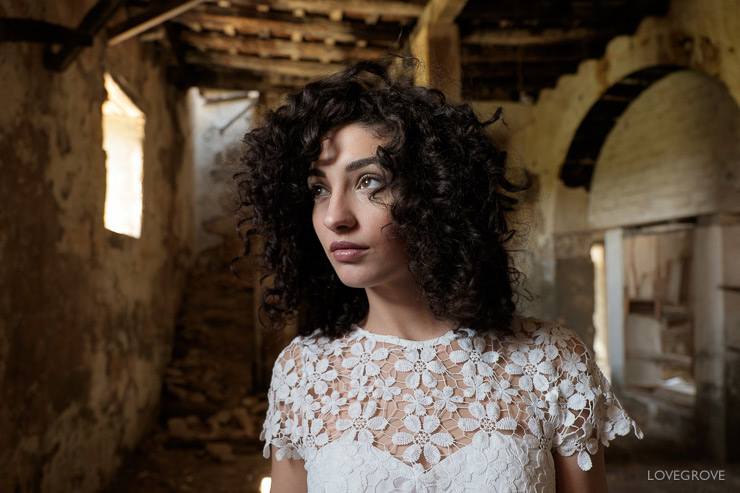
The zoom is great for wide close ups when the place the subject is in is needed to tell the story. XF16-55mm at 16mm f/2.8 – Click for 100%

The prime goes two stops bigger with the aperture and that give a different feel to the shot. XF16mm at f/1.4 – Click for 100%
Weight in the bag is the least important aspect for me to consider as I always put my bag down to take pictures. I’ve no concerns with the weight of my camera bag even with the substantial 50-140 f/2.8 OIS zoom that I take out from time to time. My bag will always be lighter that the one I used for my SLR kits and I don’t treck up mountains. I use lighting kit a monopod and various other bulky bits of kit when I am out on a shoot so the camera bag weight is not a significant factor in the whole scheme of things. I carry my bag from the car to the location – maybe 100m and that’s it.
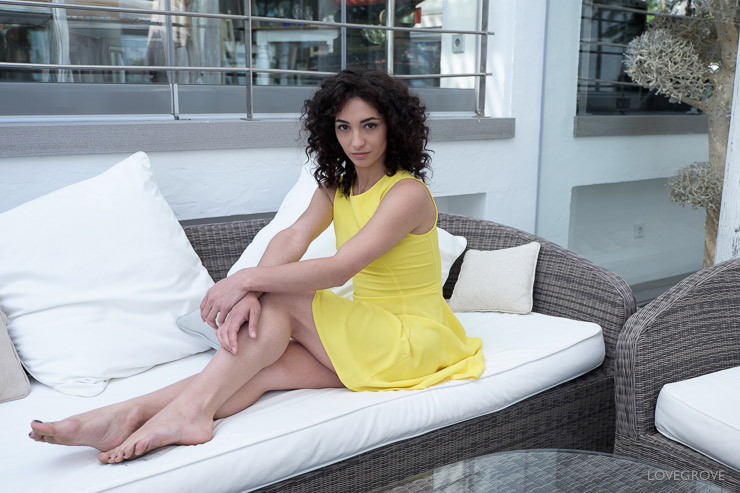
This was taken with the zoom at (near) the 23mm position. It’s hard to get the exact focal length mid point on a zoom ring but this is close enough. XF16-55mm at 22mm using f/2.8 – click for 100%

Here is the prime lens shot. I found the prime lenses gave a slightly brighter image than the zoom when set to f/2.8. XF23mm at f/3.2 – click for 100%
Price is a major consideration when choosing between the four prime lenses and the zoom lens. The web price for the 16, 23, 35 and 56mm lenses is £2486 ($3788 or €3477) and the 16-55mm zoom is just £899 ($1370 or €1258) I say ‘just’ because you get a lot of lens for your money. The savings to be had going down the zoom route is £1587 ($2418 or €2219). For 95% of the time most people who shoot at f/2.8 or smaller will be getting pictures at the same optical quality whatever option they choose. The f/1.4 shooters better start saving.
Optical quality is a big issue in most peoples minds but it really isn’t a factor when you choose to go for Fuji zoom or prime lenses. Yes there are a few subtle differences, mainly at f/2.8. By that aperture the primes are already two stops down and nearing their optimum working aperture while the zoom is fully wide. By f/4 there is little between the optics and at f/16 the zoom will deliver better shots with one more stop in hand over the primes on their limit. Of course your choice of optics depends upon the kind of photographs you take. I work in dark interiors so I need the primes. If you shoot landscapes at f/8 on a tripod the zoom will be perfect.
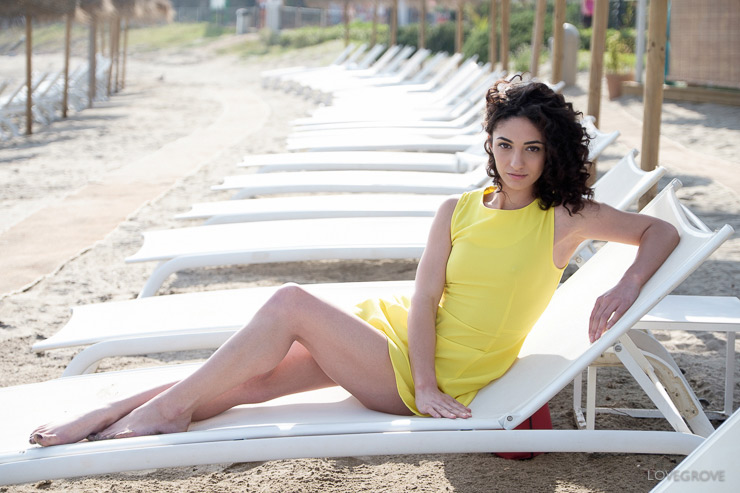
XF56mm prime at f/2.8 – The 56mm lens opens up by over two more stops and that renders the background far more out of focus. It’s not always needed but the effect is delightful in some situations. – click for 100%
Two extra stops make the difference between getting the shot or not. If like me you shoot portraits and are drawn to dark places like caves and cellars you will know just how amazing the light can be in these places. Although the quality of the light is superb there just isn’t much of it. So how would I cope with an f/2.8 lens? I can’t really drop the shutter speed any further because subject movement starts to be significant when shooting portraits. The aperture is maxed out at f/2.8 so I can only resort to a high ISO to get the shot.

This shot taken in a cave in Spain was captured using the XF16mm prime lens set at the maximum aperture of f/1.4. I used a shutter speed of 1/15th second and this was as low as I could go hand held. Out of the 5 frames I shot just 1 showed no signs of subject or camera movement. I shot using ISO 1600 and picked up the highlights half a stop in Lightroom. With the XF16-55 I would have had to resort to an ISO of 6400 and in my experience the shadow details would be lurking in a sea of noise. The frame above was shot on the X-T1 and at just ISO 1600 it will print beautifully. I can imagine it as 1 metre wide print on aluminium on the wall of an art gallery. I’ll be back in the cave with delegates for my workshops in September.
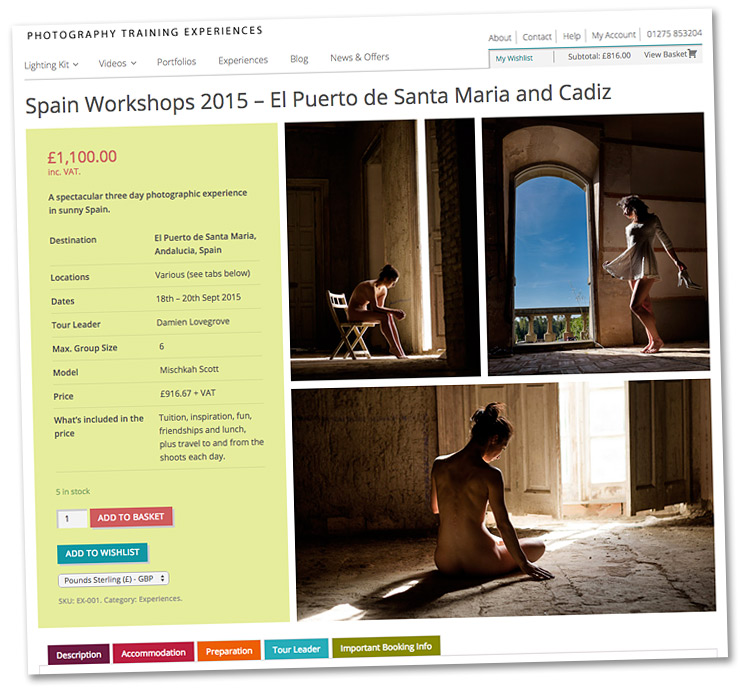
The Spain workshops are just one of the Lovegrove photography experiences set for 2015. Join Mischkah and I Southern Spain this autumn for three days of creativity, fun and inspiration. Click on the image for more information from our new website.
Lens hoods I always use lens hoods. I’ve grown up using lens hoods and I’m not going to change now. I want every bit of optical quality I can get and even when I’m using Black Pro Mist filters I like to control flare with a hood. A lot of photographers have complained about the petal shape hoods because they look ugly. I happen to like them because they are effective. With the zoom however the lens hood is a compromise at all focal lengths except fully wide. It looks as if Fuji are finally going to make a series of dedicated bayonet mount metal lens hoods with rectangular apertures. I hope they are made with precision and are as efficient at removing stray light as they can be. Time will tell.
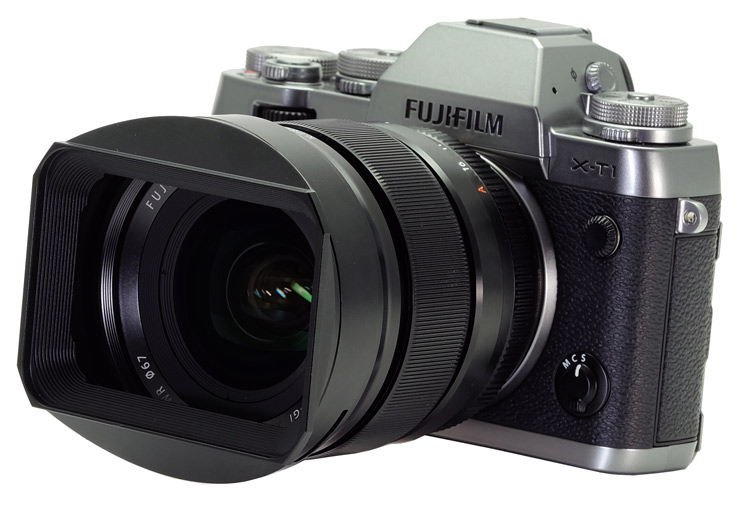
Is this a one off? I hope not and I hope that there is a new series of hoods for prime lenses that look like this one shown here on the new XF16mm lens. These can’t come soon enough. Please Fuji creative team… design a great clip on or locking dust cap for the front of the hood to compliment it. Thanks.
Conclusion We are spoilt for choice but there are definite reasons to choose the zoom over the primes and visa versa. The things that matter at the end of the day are creativity and productivity. Choose the option that will inspire you to get out there and fill your life with the magic of photography.
Feel free to join the debate below. Don’t be hard on my techniques because this isn’t science, this is a real world testing. No tripods were used for these shots and I have no desire to take pictures of brick walls, I just shot regular portraits in various lighting conditions.
I hope this helps you decide what route you will take with your Fuji X lens choice.


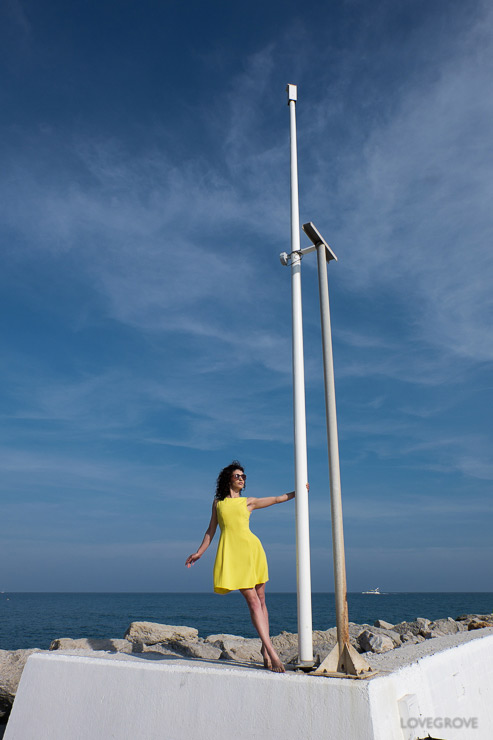

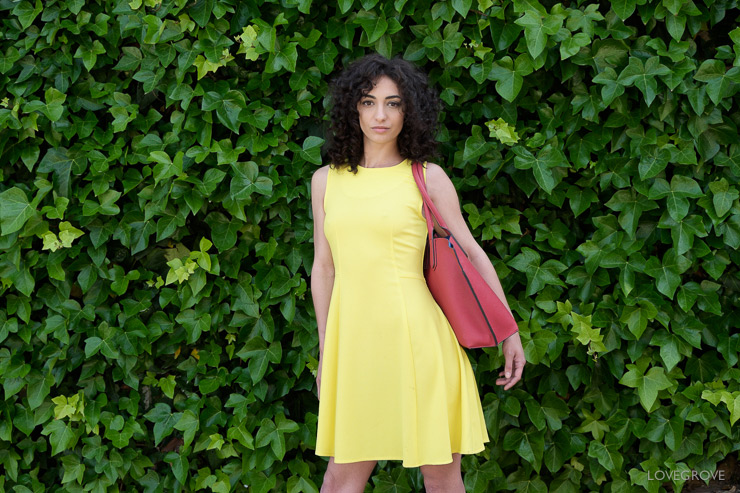
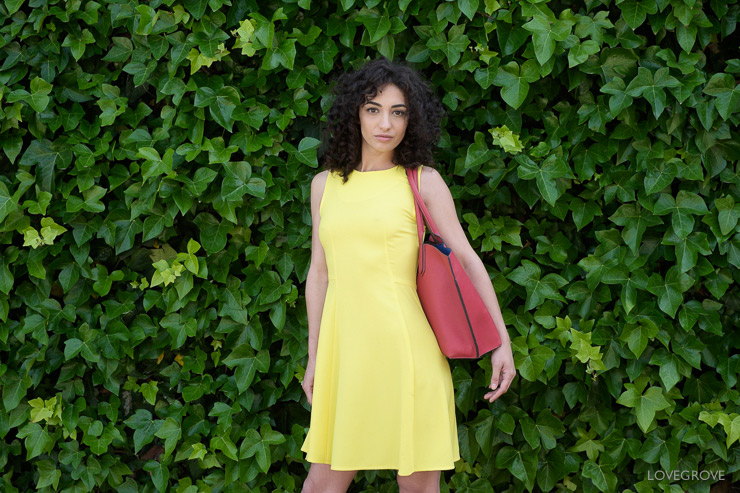

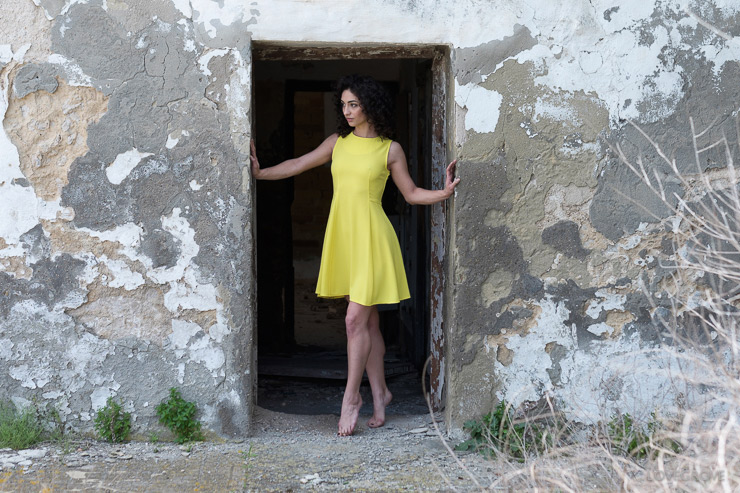
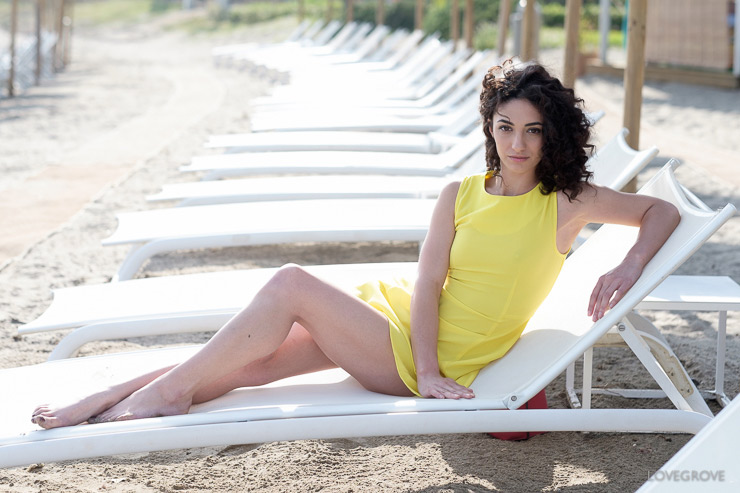
Hi Damien, slightly off topic, or not, i have the 16-55 which I bought with a new X-T2, bought am always drawn to a nice bokeh, sohave the 56mm f1.2 in mind – but it appears their are 2 versions of the lense. Is the APD version worth the extra money or just nice if money is not an object?
Hi Andrew,
I prefer the look of the non APD images. If they were the same price I’d buy the non APD. It lets in more light too.
Cheers,
Damien
Hi Damien. I’m a big fan and love your content. This is a great piece. I have the 16, 23f2, 56 and 90. I don’t have any zooms. (Well I do have a 18-55 but it’s on the xe1 for my daughter). Debating if I should add the 16-55 but I’m spoiled with prime quality and since I’m a sucker for bokeh and shallow DOF, I worry I won’t be happy with the quality. I do shoot a lot of portraits and though I’m not as concerned with low light (especially now that I’m using the Xh1 so can rely on slower shutter speed with the ibis) I Just sorry I’d miss the unique look that a 1.2 or 1.4 aperture gives my portraits. I would have to trade the 16 or 56 to fund the purchase. (Would hold onto the 23 as a lightweight option and the 90mm as a longer lens). Any advice for me on whether to make the move and which lens to trade ? Thanks so much
Hi Rivki,
I can’t decide what lens is right for you. I can only give you the info and my opinions on each lens. Only you know how you work and if camera balance is more important than IQ or bokeh is more important than price etc etc. I wrote this guide a couple of years ago on the Fujifilm lenses and system to help people make informed decisions. The kit that’s not included are the 80mm lens and the X-H1 plus XE3 cameras. IBIS is a game changer so this must be taken into account with regard the 16-55mm, 35mm, 56mm and 90mm lenses.
Kindest regards,
Damien.
Hi Damien,
I just have to put pen to paper, I am absolutely amazed at the quality of my 90mm lens, I can pick out the shots taken with this lens from a large batch of assorted images, the quality just jumps off the screen.
So much so I an now disappointed with my other lens that do not have that crisp detail.
I have the 50-140, 16, 23 and 35 f2. Even the zoom which I always thought was good, is not a patch on the 90.
I might have been lucky and got an exceptional one, I wont be selling it, thats for sure.
When the new Xt2 comes out with IBOS this combinaqtion will be a killer.
Regards
Michael
Hi I have switched to an X-T2 and with budget concerns an 18-55mm zoom I do a lot of landscape/seascape any thoughts on the 10-24mm zoom versus a 16mm prime? Loved your practical review here.
Hi Kev,
Thank you. The 10-24 is an absolute favourite lens among the Landscape/ Seascape shooters. However don’t be pulled too wide with it. I suggest 12-16mm is the sweet spot. The other lens to consider is the 14mm. It is smaller, lighter, super sharp and perfect for star trails too.
Enjoy your photography and stay inspired.
Kindest regards,
Damien.
Hi Damien, I’m currently a Nikon shooter and have made the decision to switch to Fuji – thanks for all your reviews and feedback, they get just the right balance of creativity and technical know how. I have decided to purchase the XT2 and to go down the prime route and I’m leaning towards the 23mm (either F1.4 or F2) and the 56mm F1.2 and may add the 50-140mm f2.8 at a later date when funds permit. I mainly shoot children and families and also some street photography and need to be able to cope with the children darting around and occasionally low light conditions. Do you think the set up is about right and any thoughts on the 23mm F1.4 vs the 23mm F2? Many thanks Nick
Hi Nick,
You will love the X-T2. Go with the 23mm f/1.4. The 56 will become your favourite lens. The 50-140 will become your most used lens ;) I wrote this guide to the Fuji X system just for photographers like you: http://lovegroveportraits.com/fujifilm-x-ebook-guide-portrait-photographers/ It’s an exciting journey.
Have fun,
Damien.
Hi Damien,
Thanks for the helpful articles. If you could chose between the (56 F1.2 and 55-200mm), OR the (50-140mm F2.8) when traveling and family portraits, which would you choose?
Kind Regards
Hi Michael, I always travel on my holidays with just the 18-55 and 55-200 lenses. They are small enough so that my holiday never feels like work. For my family portraits I like the 56mm f/1.2 but my daughter is now 20. If you are running around after younger children you might prefer to go for the 50-140. I don’t think this is much help but there are different lenses for different uses ;) Kindest regards, Damien.
Damien,
Thank you for sharing your craft. I bought your two ebooks, great information and answers all the questions, as well. The format of the ebooks were also very easy to navigate, read etc well done… I realize it must take an enormous amount of time and energy from you (+/-team) and I as many others appreciate it.
Thomas
Rotterdam, NL
Thank you Thomas for your kind compliments. I’m glad you found the books useful :) Best wishes, Damien
Hi, Damien!
First of all, thanks very much for your great articles! They are all amazing!
Really need your advice. Now have 16 1.4 and 56 1.2 fuji lenses and I want to buy t2. I like fixes, but sometimes really need to go with zoom (example weddings or outdoor sport games). Is 18-55 2.8-4.0 enough for reportage, or I should buy 16-55 2.8? I heard 18-55 not so sharp and fast as 16-55. Is that so noticable? 18-55 really cheap as kit lenses…. Also, what can you say about 23 2.0 vs 35 2.0?
Thanks in advance.
Hi Peter,
Thanks for your message and thank you for your kind words. 18-55 is an amazing lens. It is sharp and has OIS. 23 and 35 are similar quality just a different focal length. The risk is you have to carry too many lenses. I carry 16, 23, 35, 56 and 90. Too many fore some people. You can read my complete write up on lens choices and lens sets in my new Guide to the Fuji X system. Kindest regards, Damien.
Hi Damien, long time since we cooked together in Bristol.
Really enjoyed your reviews.
Thanks Ron :)
Hi Damien,
I’m currently researching what lens should I buy for my first Fuji system. I changed from Nikon D70 that I used since college days. I’m split between buying 35mm f2 or the kit lens 18-55mm. I know I used it mainly for hobby, family portrait and gathering, and all other common stuff, but I’m so used to using 50mm f1.8 and 24-70 f2.8 in Nikon interchangeably that now I’m confused to which should i buy first. Do you have any opinion? Getting the kit certainly makes it a bargain, but I also really like the 35mm.
Thanks.
Damien,
First off, thanks for this great article. I’ve always admired your work but didn’t realize it was you until the end.
Two questions, and I’ll try to keep this brief. First off I noticed with your wide selection of Fuji lenses, and I know that you’re a “Prime kinda guy”, that you don’t have the Fuji 10 to 24 mm lens. I find this lens to be amazingly sharp, definitely prime quality, and a perfect lens for travel. I realize you do mostly portrait work, but any reason you don’t have this lens? While individual primes are definitely smaller, this is the weight and cost of about two primes, but gives you the 12 mm Intuoit, the 14 mm, the 16 mm, the 18 mm, and even the 23 mm, plus a nonexistent superwide 10 mm lens. And with the nearly 5 stops of OIS, even though I also own the 23 mm F1 .4 lens, I rarely use it when traveling because of the versatility of the 10 to 24 mm.
My second question involves the Fuji 56 mm F1 .2 lenses. I currently own both a Fuji X T1 and an X-Pro1, along with five Fuji lenses, and I plan to get the 16 to 55mm zoom this weekend. I do also shoot with a full frame Nikon with the Nikon 85 mm F1 .4 D lens. Yes, it’s big and heavy, but I can handle that for an hour or two on a shoot and I love the image quality. I’ve seen what you do with the Fuji 56 mm and I love it, but when I see comparisons between it and the full frame 85 mm lenses, it seems the out of focus background items with the Fuji 56mm have too much “bite” or distracting contrast compared to a Full frame 85 mm. I think Fuji recognizes this and for this reason also created the 56 mm F1 .2 APD version, but it only seems to work wide-open, it cuts into the light gathering ability, And of the five or so positive reviews on Amazon, while they liked the lens, ALL returned it. What is your opinion on this?
Hi Nathan, I do have the 10-24 and used it for this trip to Cambodia:https://www.prophotonut.com/2014/09/04/cambodia-part-1-kingdom-wonder/ I mention it in picture 4. It’s an ok lens but I find it a little soggy in the corners wide open at 10mm plus I nearly always regret using it at 10mm so I carry the much lighter 14mm lens or 16mm lens but never both. The extra stops of light capability are great with wide angles as OIS doesn’t control subject movement. I prefer fast wide lenses and OIS on tele lenses.
I have the 18-55 zoom and it’s amazing. The XF 90mm might be best for you. Anyway you can see my thoughts on the bokeh of the 56mm and the APD here: https://www.prophotonut.com/2015/01/05/fuji-x-series-portrait-lenses-compared-inc-56-apd-50-140-zoom/ and you can view some of my lens galleries here: http://www.lovegrovephotography.com/category/galleries/page/3/
I hope this helps,
Damien.
Hi Damien,
I bought X-T1 last week. 16mm F1.4 is my only and first lens for ‘all around’ work. At the beginning it was great.Especially for streets,then i’ve started to think that it was not enough for portraits with blur and bokeh in spite of F1.4 aperture. Do you think 18-55mm is better option for portrait and all around work ? there seem to be no big difference between 16mm and 18mm for the focal lenght comparison at the streets; but could 50mm focal length at 18-55mm lens make better job for portrait? i cant find out the answers..
Thanks.
Hi Sqelet,
The 18-55 is a good general purpose lens and suitable for portraits. The 16mm is wide, The 35mm is standard and the 56mm is tight. These shots are a help: https://www.prophotonut.com/2015/01/31/portraits-fujifilm-x-series-lenses/ and do read this: https://www.prophotonut.com/2015/01/05/fuji-x-series-portrait-lenses-compared-inc-56-apd-50-140-zoom/ Cheers, Damien.
Hi Damien,
I’m about to purchase an xt1 and deciding on what my first lens is going to be. If you were to choose only 1 lens, which would you go for, a 35, 56, or 16-55?
Hi JP,
I’d go for a 23mm then a 56mm. If I was only ever going to get 1 lens then it would be the amazing 18-55 OIS lens. The OIS alone makes it better than the 16-55 in my opinion and it is super sharp too.
I hope this helps,
Damien.
Hi Damien. Great Article as always.
I sold off my 23 when I got this lens purely for simplifying my gear and making it more travel friendly. And as happy as I am with the 16-55, I feel like it’s missing something. Technically – it is perfect, very sharp and contrasty. However, I feel like when shooting people, the 23mm had a bit more of a 3d look to it.
Have you noticed this in your usage?
I would never get rid of the 16-55, it is versatile, WR and great for travel/landscapes but I think I might pick up another 23mm for portraiture. Do you think that is worth it though? Or are the differences subtle and probably only ever going to be noticed by me.
PS. Is the focus in the 16-55mm photo, which is being compared with the 23mm, slightly off?
Hi Azhar, quite possibly I missed the focus a gnats with the zoom. I just do my thing and rarely pixel peep.
Cheers, Damien.
Hi Azhar,
The 23mm is my go to lens. I’ve not been drawn to the 16-55 as I love the look of f/1.4 on APSC. It is like f/2 on FF. The 3D nature of the look is something that Leica shooters discuss. I’m delighted with the rendering of the fast Fuji primes and the AF is perfect for me.
Kind regards,
Damien.
Please explain that if the following as you mentioned above -Have a pool of lenses and pick from them for each job. Way too many choices though…
Set 1 – 16, 23, 35 and 56 and X-T1 For weddings and events
Set 2 – 18 and 27 on the X-T10 for street and lightweight kit
Set 3 – 14, 18, 35 and 56 for travel
Set 4 – 14, 18-55 and 55-200 and X-T10 for travel option 2
Where does the 50-140 that you like so much fit in? And is there an debate for the new 90mm?
Having now decided to sell all my Canon gear and gear up on my XT1 confusion reigns in my little brain.
As a people shooter I\m considering the 50-140. 56 1.2 and 16 1.4. Is it worth keeping my 18-55 or trading up to the 16-55? Or going for the 90mm F2?
Love your work!!
Hi Paul,
My choice would be…
Weddings and events: X-T1 with 16, 23, 35 and 55-140
Street: X100t or X-T10 with 18-55 (no faffing with changing lenses, no bag required and the 18-55 is sharper than the 18 prime).
Travel leisure: X-T10 14, 18-55 and 55-200.
Travel assignment: X-T1, 16, 23, 35, 50-140.
Location portraiture: X-T1, 16, 23, 35, 56, 90mm (56 and 90 always used with the camera on a monopod).
Cheers,
Damien.
hello… your article is nice. can i seek your opinion what is a better option for a prime len to use for travel and portrait? im using XT1 and 18-55mm. will you recommend 23mm f1.4, 35mm f1.4 or 56mm f1.2?
Hi Celes, Only you can make that decision. Both those focal lengths are in your zoom. If you want a travel prime then consider the 27mm too and you can leave the zoom at home or get a 14mm to compliment the zoom. Just a few ideas. Damien.
Only the 18-55 has IS. Wont this give an extra 2 stops?
Hi Paolo, The IS on the 18-55 is nearly as good as 4 stops but unfortunately it doesn’t stop subject movement so when you need 1/125th to stop subject movement there is no advantage with the IS. I hope this makes sense.
Kindest regards,
Damien.
Hi Damien. Leaving my lifelong Nikon identity behind, I intend to buy an XT-1. I still struggle with the choice of lenses though. I love wide-angle photography (landscapes, street, “spaces”), as well as low natural light, so the 16mm 1.4 seems the perfect choice. But I also want to have some cover at least of some larger focus ranges (I’m not a tele guy), so I thought to combine the 16mm with the 18-55mm zoom. I was a bit anxious about a possible gap in quality between the two though. An alternative I considered is the 16-55mm zoom, but I believe the 16mm prime does have that bit of extra bit of clarity or brightness, in addition to the two extra stops, which are so valuable in low light conditions. What is your view? Would the 16mm make me disappointed with the 18-55mm zoom? Going primes-only (16-35-55) might be a great choice, but I would not want to carry three lenses standard when travelling etc., and I will probably mostly work short focus. Thanks in advance for your insights! Bas
Hi Bas, the 18-55 is stellar so don’t worry about the image quality. Only you can decide on the lenses you want to use as it’s such a personal thing. Enjoy your photography,
Damien. :)
Hi Damien beautiful work I would love to get your take on my lens situation
currently I own xt1 which i bought originally with the following primes 23 35 and 56 then i realized when I do my travel jobs where I travel along with people that its easier to have a zoom too so i got the 18-55 2.8-4 also got my hands on a rokinon 12mm f2 but it doesn’t end here:)
Now that the x10 came out i decided ill get it as a second body and as a personal runaround camera I figured I can have a zoom on one and a prime on one for street during travel etc I also wanted it to be super light so that I will take it with me a lot so i just ordered myself a 27mm
Now I’m itching to get the 18mm which I’m not sure i need if i have the zoom 18-55 2.8 versus f2 and of course versus super light
and on the more professional side of things Im very tempted to get the 16mm for when I shoot events weddings etc but then I find that I have a bit too many lenses meaning should I replace my 23 with the 16mm maybe get rid of the specialty rokinon 12mm
It does make a big difference to me how many lenses I carry on the job since I walk with my bag for hours
I appreciate any input and thanks for taking your time
Hi Perfect Portrait,
Have a pool of lenses and pick from them for each job. Way too many choices though…
Set 1 – 16, 23, 35 and 56 and X-T1 For weddings and events
Set 2 – 18 and 27 on the X-T10 for street and lightweight kit
Set 3 – 14, 18, 35 and 56 for travel
Set 4 – 14, 18-55 and 55-200 and X-T10 for travel option 2
You choose. Life would be so much easier with just one X100T but maybe clients would wand more variety ;)
Kind regards,
Damien.
Hello Damien, I really like your site and of course your incredible pictures. I’m struggling to decide between keeping my 14mm and 18mm or trading them to fund a 16mm to go with my 35 and 56. Obviously 14mm gives a wider perspective and the 18mm does offer some low light capability in a tiny package but there is something about just having three fast primes….my favourite lens remains the 35 for the look it produces. Best regards, John
Hi John. I’m sure Damien will reply soon. He is the expert. I have the 35mm and 56mm lenses and LOVE them. I also have the 18-135mm which I use for travel, but it is a lot slower. It is fine for landscapes on a tripod and great for close ups of flowers, but not for low light events etc. My children do ballroom dancing and I’m finding the 56 and 35mm serve my needs pretty well for that but I don’t have a low light wide angle lens. I’m now going to buy the 16mm to add to my trio of lens. That will probably cover most things for me. Whether you trade in your other lenses, I guess it depends what kind of photography you do. I tend to be in low light a LOT for school events, ballroom events etc, so it suits me. I’d also like to try astro photography and the 16mm would be fairly good for that. I also want to do some more handheld street photography and documentary style photography and I’ve read that the 23mm (on a 35mm camera) which is equivalent to the 16mm fuji is the best angle for that type of photography. If you are mainly a landscaper with a tripod, I’d just stick with what you have got. Especially with the extra bit of wide angle you get from the 14mm. These lenses do hold their price fairly well though, so selling the two would probably get you the 16mm. It is a tough decision! Good luck!
Hi Bel,
Thanks for replying so comprehensively to John’s request for advice. The 16mm is perfect for the ballroom dancing shots you do. It’s tougher than ever to choose the right combination of lenses. Each new lens that comes out seems to warrant a place in my kit ;)
Kindest regards,
Damien.
Hi John,
Thanks for the compliments. I sold my 18 when I bought the 18-55. I never regretted it until I got the X-T10. Now I think the X-T10 with the 18mm would be perfect partners. The 16 is a big lens, the 35mm is perfect size and the 56 is big again. If size is no issue then it has to be 16, 35, 56. or go for 14, 23, 56 as a three prime lineup. I’m using a 5 prime lens line up for my next trip 16, 23, 35, 56, 90 but it might be overkill. Sometime I wish I only had the X100T and just got on with making pictures.
Too much choice ;)
Kind regards, Damien.
Damien, great post here. I have the X-T1 with the 18-135mm zoom for travel, but recently bought the 56mm and am now hooked on primes. I bought an extension tube for the 56mm and can now take pseudo macros! The portraits I can take of my kids in a low light room like my lounge are phenomenal with the 56mm! I have now bought a 35mm and you have just convinced me once and for all that the 16mm is the way to go as well. I need low light capabilities in all my primes. Not sure why but I always seem to be shooting in low light. Then I’m set for life I think! Fuji has created a photographic monster that can’t put the camera down! Still like my zoom for travel however. it is very versatile although I’ve read it isn’t the best lens Fuji has ever done. The 18-55mm has better IQ apparently.
Hi Bel,
The IQ on all the XF range of Fuji lenses is fabulous so no worries there. The extra couple of stops from the primes combined with the lighter weight on the camera make them the main choice for me.
Enjoy your photography and stay inspired.
Kind regards,
Damien.
Damien, I first want to tell you that I believe your photography is the best I have seen, anywhere and I have been in the game since 1973. Thank you for your work.. I wanted to ask, I bought the X-T1 with the 18-135 and needed to return it because the lens stopped focusing correctly. I want the camera back, but not sure about the lens. What are your thoughts on the 18 – 135 3.5 /5.6? Should I get the 18-55 instead? I like the reach of the 135 since my daughter plays soccer.. But want the best lenses.. Thank you!
Hi Bernie,
Thank you for your kind words. I understand your predicament. I’d get the 18-55 and pick up a 55-200 too. I’ve not heard great things about the 18-135 apart from the fact that it is weatherproof.
Kindest regards,
Damien.
Hi Damien could you tell me which type of lighting is best for beginner many thanks
Hi Graham,
Available light is the best. There is so much to learn about light and 98% of it can be learned by using available light, both natural and artificial. Once you have understood light you will be able to make informed decisions on what lighting equipment to buy if you need to buy any. There are no levels when it comes to light. Beginner and experienced can use the same light. You can choose between Speedlights, Fresnel spotlights, Studio flash, location flash, continuous etc etc. It’s a case of selecting the right bit of kit for the job. There is no one light does it all. I wish there was sometimes.
Kindest regards,
Damien.
Muchas gracias, Damien, por este analisis del XF16-55mm. Estaba en duda si comprar el XF56mm o el XF16-55mm, aunque me convenia mas el zoom. Ahora ya me convenci que lo que necesito conseguir es el XF16-55. Soy un admirador de su trabajo. Excelente, por cierto. Un abrazo desde Mexico. Enhorabuena.
You are welcome Alfredo :)
Hello Damien
I am always amazed by your photos.
I love the way you see the light.
I hope one day to understand the light as you do.
Thank you for this review. I now know without the risk of being wrong, I’ll buy this 16mm.
I became a Fuji fanboy with X-Pro1 and now with the X-T1. And have no regrets.
I keep my Nikon FX for some applications, but otherwise it is Fuji first!
Thank you again, and continue the great work.
Wow, Thank you Chris for your kind words :)
Stay inspired. Best regards, Damien.
Thanks for the work you have done, but I have a problem with the result. I am quite sure that the zoom photo of the model between the walls is not sharp! Now for me keep the question is the zoom unsharp or did you not use a tripod or did you miss the focus. For me is the question important as I want to buy this zoom lens.Thanks for your answer!
Hi Herman, As stated in the piece I did not use a tripod. These are real world shots. Yes I occasionally miss focus or get a bit of camera/ subject movement but I’ve not pixel peeped the shots as I don’t find it nessesary. It’s sharp enough for me but I need f/1.4 so I’m sticking with the primes. If you want MTF charts or absolute sharpness info you will need to look at the technical type reviews. I just write about how it is to work with the various lens options. I hope this helps. Damien
Great article as usual, quality zoom there.
I especially love the conclusion statement however. Something to remember amongst all the gear choices out there.
Thank you sir!
Thanks Chris for taking the time to comment and for your kind words.
Best regards,
Damien.
Hello Damien,
great article again! I have recently switched from Canon to Fuji x-e2. Since then Canon stays alone in my closet. I really like the preview capability of fuji and the color reproduction as well as the iso capability which my old canon was not capable. It really freed up my photography. I have the “kit” lens, though I would not call it as kit lens. Though f2.8 to 4 is quite good I think about a lens with slightly wider aperture. My style is now changing thanks to lightness of fuji and nice preview, so I have to wait a bit to find out suitable focal lenght for my photography (and save money…:)).
Anyway i have to thank you, because before reading your articles I was thinking about buying a new Canon…
Ondrej
Hi Ondrej,
Thanks for the compliments. I’m glad you are onboard with the Fuji system. Don’t think of your 18-55 as a kit lens it is way better than that. I’d add a 16mm f/1.4 and if you shoot portraits save up for the 56mm f/1.2. Keep the two primes in the bag and the zoom on the camera. When you get the prime bug you will find yourself switching 16 to 56 then back to 16 and the zoom will be in your bag ;) Cheers, Damien.
I know that this post has marinated for quite some time, but I have done the 18-55, 16, 56 set up and this is a great combo. Thank you for all your excellent, no BS info!
Thank you Jac :)
Hi Damien
I have been following you for sometime and although I have often agreed/appreciated your posts this is my first comment :-)
Great comparison and really useful information, in fact I was really impressed with the zoom’s performance! I have all the fast fixed and 14mm and I have to say I didn’t know whether to be disappointed with the primes or blown away with the zooms… lol. I know the primes are sharp, tack sharp, but I really had no idea the zooms did that well.
Like you, I love existing light so primes are my first choice always… Something I noticed is the zoom at the wide end is quite a bit softer as you have noted, but it actually seems to have better micro contrast. I know this sounds like pixel peeping, but the effects of pronounce micro contrast can almost absolve a lens of the sins of softness and lower resolution. Your examples really showed that in the higher key areas where details can be seen clearly on the zoom but not the prime… Also, the inherent deeper DoF helps the zoom too.
Thanks for doing this Damien, I am not in the market for a zoom but love learning more about the differences so to be better informed. This is why I like you site & work… I learn form it :)
Bradley
Hi Bradley,
Thank you for your fabulous comment. As you will find out no doubt I do reply to every comment that’s made on my blog. I occasionally miss the Facebook ones but the blog ones always get a response from me. I agree about that micro contrast thing with the zooms. The primes are a bit like the lenses that I used on my medium format kits from Zeiss, Rodenstock, Schneider etc as they have a lower micro contrast but are really sharp. They also have a more 3D look to them than the zooms and I’ve no idea why that is. It might just be a trick of the light. Anyway the thing is the differences are really subtle. I reduce the contrast of my primes down even further by using Tiffen 1/4 black pro mist filters when I’m shooting inside on location. It gives the images a more filmic/ less digital look. I also use no noise reduction and minimal sharpening.
Kindest regards,
Damien.
Thank you for your comparison. I think zoom and even the primes on the x100s/t are great. But not for low-light. They are not built for candlelight-dinners. You need the 1.4-option of primes. (Or you have to wait for the next 2 or 3 generation of sensors)
Thanks Karl, The X100T is a stop faster than the zoom and that makes a difference. I do love my fast X series primes though. Cheers, Damien.
Great article Damien. My wife’s just bought the XT1 with the 16-55 f2.8. I’m a canon user myself so it’s taking me a while to find my way around it. What settings do you use personally, say for the shots in your post?
Hi Stuart, There are a lot of setting to set as you know. My X-T1 set up starts with the viewfinder. Brightness middle or zero, then jpeg settings- Htone -1, Stone -1, Pro neg S, sharp -1, NR -2. I use AF but manual everything else. Shoot jpeg fine plus RAW and you get 100% post view. I hope this helps. Damien.
Hi Damien,
First of all thank you very much for sharing so many articles in your website.
Its only few months ago since I learn about photography and Fuji mirrorless system in particular. I would like to ask about your preference “jpeg settings- Htone -1, Stone -1, Pro neg S, sharp -1, NR -2”. How is each parameter affects the picture? in a more beginner word :D for example, the Htone will make the X part look more that-ish.
Sorry for my bad english
Hi Adi, Your English is fine :) Take a look at this blog post where I discuss my settings :) Kindest regards, Damien.
Another great article Damien, all the shots look bright and sharp to me, I have been hanging on for your findings but I do not see a clear winner here as although I shoot Weddings/Portraits I also shoot Pets and Wildlife. Difficult bugger aren’t I. :-) Suppose i haven’t found my niche yet, I have the 18-55,56, and the 50-140 WR and was looking to cover the wide end and probably leave it there for a while. I have finally had the guts to sell my Nikon 70-200mm and I expect more lens will follow in due course as I do more with, and gain confidence with the Fuji system Nice problem to have right?
Hi Kevin, Thank you. I’d say add the 16mm or 14mm and you are done. That 18-55mm lens of yours is superb so there is no need to have the extra weight on camera. Thank you for your continued support.
Regards,
Damien.
Nice….Thank you for sharing… Been eyeing this zoom for awhile..
Hi tvynorius, Thanks for your comment. The zoom is really well made, performs very well wide open and is destined to become a classic. Cheers, Damien